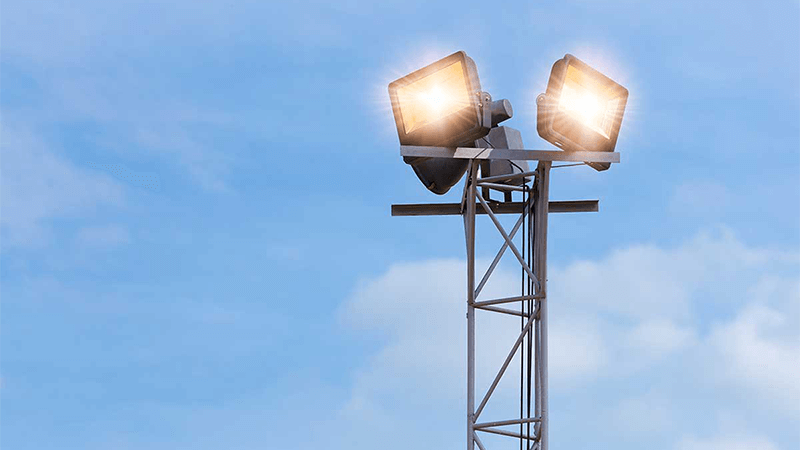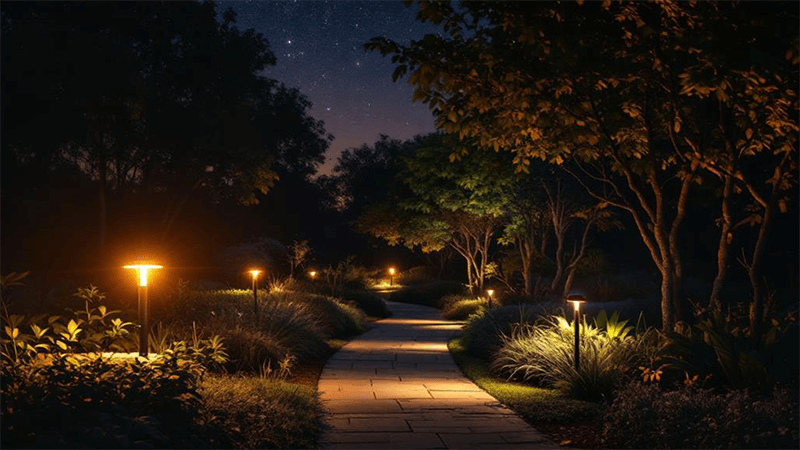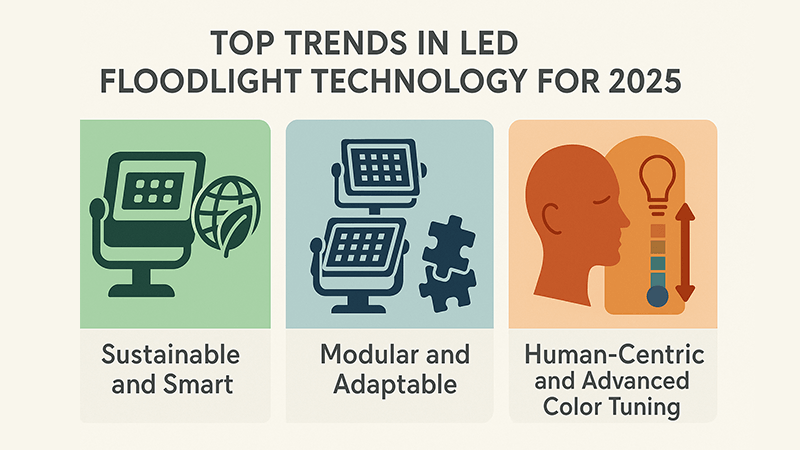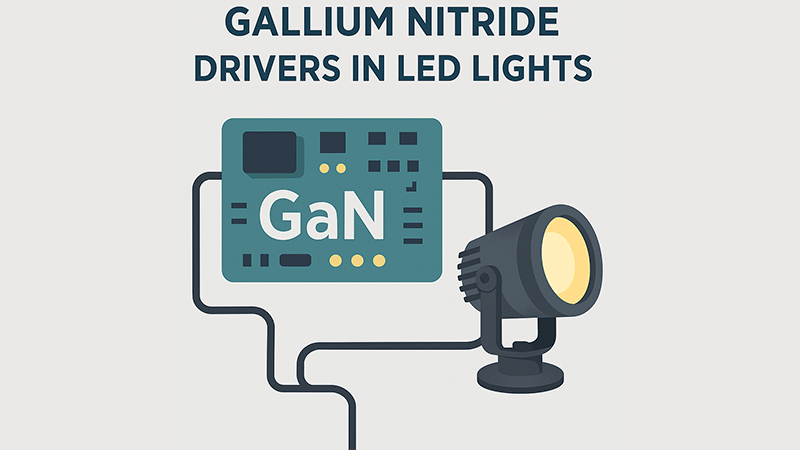Last Updated on: September 1, 2025Are your projects at risk of using outdated technology? Choosing the wrong LED floodlights can lead to higher long-term costs, poor performance, and unhappy clients who question your expertise and sourcing skills.
The top trends for 2025 focus on greater efficiency, smarter controls, human-centric lighting, and sustainable materials. Expect more integrated IoT, tunable spectrums, and advanced thermal management in the next generation of LED floodlights to deliver superior performance and value.

These trends are changing the game for lighting professionals. For over a decade in this industry, I’ve seen many new technologies come and go. The ones that stick are those that solve real problems for project contractors and their clients. As a manufacturer, I’ve learned that you must look beyond the marketing buzzwords. A lot of suppliers make grand promises, but only a deep understanding of the technology helps you separate real innovation from empty claims. To make the best purchasing decisions for your projects, you need to understand the practical benefits. Let’s break down what these trends really mean for you.
What is the outdoor lighting trend for 2025?
Are your outdoor lighting designs feeling a bit behind the times? Using outdated fixtures can make a project look old before it’s even finished, missing key opportunities for efficiency, control, and environmental responsibility.
In 2025, outdoor lighting is moving towards sustainability and smart integration. Key trends include eco-friendly materials, dark-sky compliance to reduce light pollution, and networked systems that allow for remote monitoring and adaptive lighting schedules, creating safer and more efficient public spaces.

When I speak with experienced purchasing managers like Shaz in the UAE, their focus is always on long-term value and reliability, not just the initial price. This is where the trend of true sustainability comes in. It’s about more than just using recycled materials; it’s about durability. I’ve dissected countless competitor fixtures that failed prematurely. A common issue I find is the use of unspecified aluminum alloys. The supplier saves money, but the fixture can’t handle corrosive coastal air or industrial pollutants and fails in a few years. A truly sustainable fixture starts with high-quality, traceable materials like ADC12 aluminum, which we use for its excellent thermal conductivity and corrosion resistance.
Another critical trend is a move toward more intelligent efficiency. This directly counters one of the biggest problems in our industry: false energy-saving claims. Many spec sheets boast high lumens per watt but don’t tell the whole story. The real savings in 2025 come from smart, networked lighting controls. Systems using protocols like DALI-2 (Digital Addressable Lighting Interface) or wireless mesh networks (like Zigbee) allow for granular control. You can program a parking lot to operate at 100% brightness until midnight, dim to 30% during off-peak hours, and then return to full power an hour before sunrise. This is how you achieve real, measurable energy savings of 50-70%, not with a dubious claim on a brochure. Finally, dark-sky compliance is becoming a standard requirement, not a luxury. This is about precision optics that achieve a BUG (Backlight, Uplight, and Glare) rating of U0, meaning zero uplight. It shows a commitment to quality engineering, ensuring light goes only where it’s needed.
| Feature |
Traditional Outdoor Lighting |
Smart Outdoor Lighting (2025) |
| Control |
Manual On/Off or Simple Photocell |
Networked (DALI-2, Zigbee) with Scheduling |
| Efficiency |
Static Power Consumption |
Adaptive, Real-World Savings >50% |
| Maintenance |
Reactive (Fix when broken) |
Proactive (Automated Failure Alerts) |
| Environmental |
High Light Pollution (High Glare/Uplight) |
Dark-Sky Compliant (U0 Rating) |
What is the most popular light fixture for 2025?
Choosing the wrong fixture can create installation headaches and maintenance nightmares. You need a versatile and reliable solution instead of stocking dozens of different models for every possible need, which ties up capital and warehouse space.
For 2025, the most popular fixtures are modular and highly adaptable LED floodlights. These fixtures allow for easy customization of optics, wattage, and mounting options on-site, reducing inventory needs and providing a flexible solution for various outdoor applications.

In my years of manufacturing, I’ve learned that simplicity and flexibility are what my clients value most. That’s why modular design is becoming the standard for professional-grade fixtures. I remember a stadium project where the required beam angles changed after the initial shipment arrived. With traditional fixtures, this would have been a disaster. However, since we supplied modular floodlights, the contractor simply swapped the optical lens modules on-site in a matter of minutes, saving the project schedule and budget. A truly modular system goes beyond just interchangeable parts. It means tool-less access to the driver compartment, IP67-rated connectors between modules, and a housing designed for easy handling.
However, this trend has a dark side. Many factories are now marketing their fixtures as "modular" when they are not. This brings me to another critical issue I see constantly: poor matching of LED chips. A true modular system requires that every component—the LED module, the driver, the optics—is engineered and rigorously tested to work together. Some manufacturers cut costs by sourcing mismatched LED chips and drivers from different, cheaper suppliers. The result? The fixture might light up, but you’ll see inconsistent color temperatures across fixtures, poor performance, and a driver that is over-stressed, leading to early failure. When I evaluate a competitor’s "modular" fixture, the first thing I check is the consistency of the components. If you’re sourcing these fixtures, always demand a detailed specification sheet that lists the brands and part numbers for the LED chips and the driver. This transparency is the mark of a reliable manufacturing partner.
| Benefit of Modularity |
For Distributors |
For Contractors |
For End-Clients |
| Flexibility |
Reduced Inventory; One Core System |
Easy On-Site Adjustments to Scope |
Future-Proof for Easy Upgrades |
| Maintenance |
Simple Component Stocking |
Faster, Cheaper Repairs (Swap a Module) |
Lower Long-Term Service Costs |
| Customization |
Fulfill Diverse Project Needs Instantly |
Adapt to Last-Minute Design Changes |
Get a Perfectly Tailored Solution |
What is the lighting technology in 2025?
Is your lighting just "on" or "off"? That’s old technology. Modern lighting can do so much more to enhance spaces and improve user well-being, but many are still specifying simple, static fixtures that miss the mark on creating truly functional and inviting environments.
The core lighting technology for 2025 is human-centric lighting (HCL) and advanced color tuning. This means adjusting the color temperature and intensity of light throughout the day to support natural circadian rhythms, improving productivity and creating more comfortable public spaces.

For years, the lighting industry obsessed over lumens and watts. Now, the conversation is shifting to the quality of light and its effect on people. This is the essence of Human-Centric Lighting (HCL). In outdoor spaces, this translates to creating environments that feel safer and more natural. For example, a public park’s lighting can be programmed with a tunable white system. During the early evening, it could output a bright, cool white light (5000K) to encourage activity and enhance security. As the night progresses, it can automatically shift to a warmer, softer amber light (2700K) at a lower intensity, creating a calm ambiance while still providing safe navigation. For architectural projects, we can use RGBW (Red, Green, Blue, White) systems to paint facades with light, changing colors for holidays or special events.
This advanced technology, however, highlights another major pitfall: poor adaptation to the actual environment. These sophisticated fixtures are packed with sensitive electronics. A manufacturer cannot design them in an "ideal" lab environment. They must be built for the real world. I recently consulted on a luxury hotel project where their expensive color-tuning floodlights failed within a year. The supplier had claimed an IP66 rating, but my analysis showed the failure was due to UV degradation of the silicone gaskets, which became brittle and allowed moisture in. The powder coating was also of a low grade, chipping away and exposing the housing to the salty air. True reliability comes from obsessive attention to detail: using marine-grade coatings, specifying UV-resistant polycarbonate for lenses, and using 304 or 316 stainless steel for all external hardware. You must scrutinize a fixture’s construction quality, not just its electronic features.
What is the new technology in LED lighting?
Are you still just focused on lumens per watt? The latest tech goes way beyond simple efficiency numbers. Sticking with old metrics means you’re missing the bigger picture of value, compactness, and long-term reliability built into the core of the fixture.
New technology in LED lighting includes advancements in GaN (Gallium Nitride) drivers for smaller, more efficient power conversion, and more sophisticated thermal management systems that dramatically extend the life and performance of the fixture itself.

As a manufacturer, I get excited about the unseen components because that’s where true innovation lives. A huge leap forward is the adoption of Gallium Nitride (GaN) for LED drivers. For decades, drivers have used silicon-based semiconductors. GaN is a superior material that can switch at much higher frequencies with lower resistance. For a purchasing manager like Shaz, this translates into tangible benefits. The higher frequency allows us to use much smaller magnetic components (like transformers and inductors), resulting in a driver that can be up to 50% smaller and lighter. This gives lighting designers more freedom to create sleek, less obtrusive fixtures. More importantly, GaN drivers are more efficient, wasting less energy as heat. This not only saves electricity but also reduces the thermal stress on the driver itself, leading to a much longer operational life.
This focus on heat brings us to thermal management, the most critical factor for LED longevity. This addresses the final hidden problem I see: unspecified source of materials for LED floodlights. It’s not just the external housing; it’s the internal components. I’ve tested two floodlights that looked identical on the outside. One ran at a stable 65°C chip temperature, while the other hit 90°C and was destined for early failure. The difference? The quality manufacturer used a pure copper core board and a high-performance thermal interface material (TIM) to bridge the tiny gap between the LED and the heatsink. The cheap one used a standard aluminum board and a smear of generic silicone paste. Advanced thermal designs now include separated thermal paths, where the heat from the LED chipset and the driver are managed independently to prevent one from cooking the other. When sourcing, ask your supplier to explain their thermal management strategy. A good one will be proud to show you.
| Component Technology |
Traditional Approach (Silicon) |
New Approach (GaN) |
| Driver Size |
Bulky and Heavy |
Compact and Lightweight |
| Efficiency |
Good (~88-92%) |
Excellent (~95%+) |
| Heat Generation |
Significant, requires large heatsinks |
Minimal, simplifies thermal design |
| Reliability |
Prone to heat-related component failure |
More stable and longer-lasting |
Conclusion
For 2025, successful lighting projects will demand smart, sustainable, and adaptable LED floodlights. Look beyond surface claims and scrutinize components to ensure long-term performance and deliver real value.